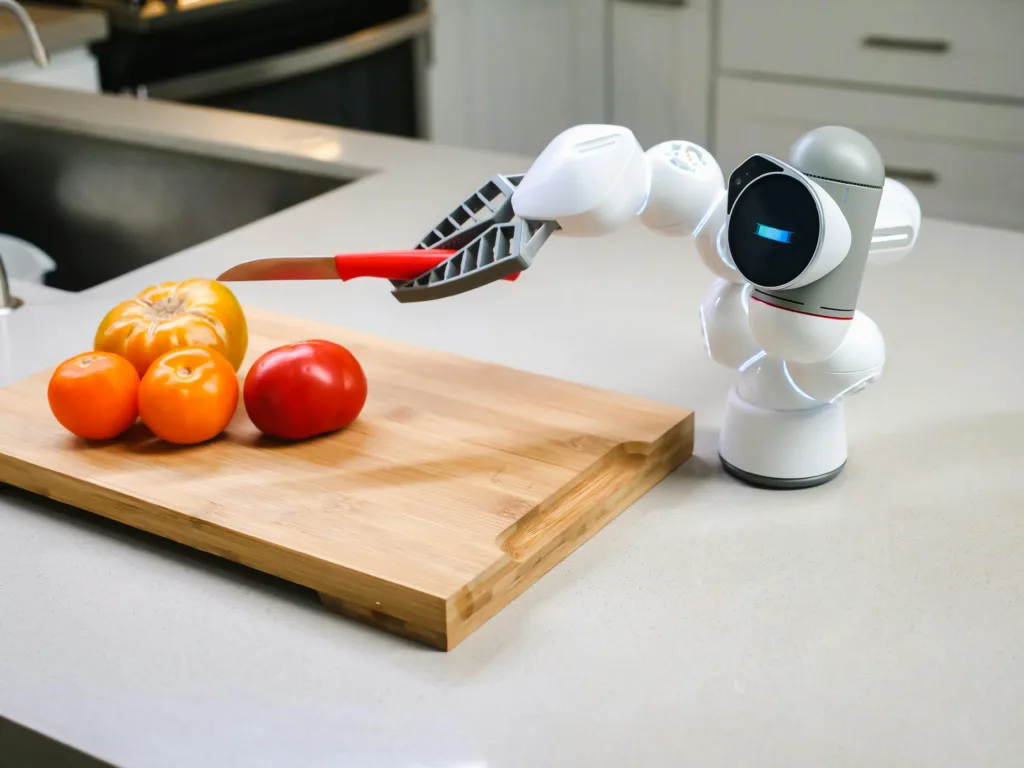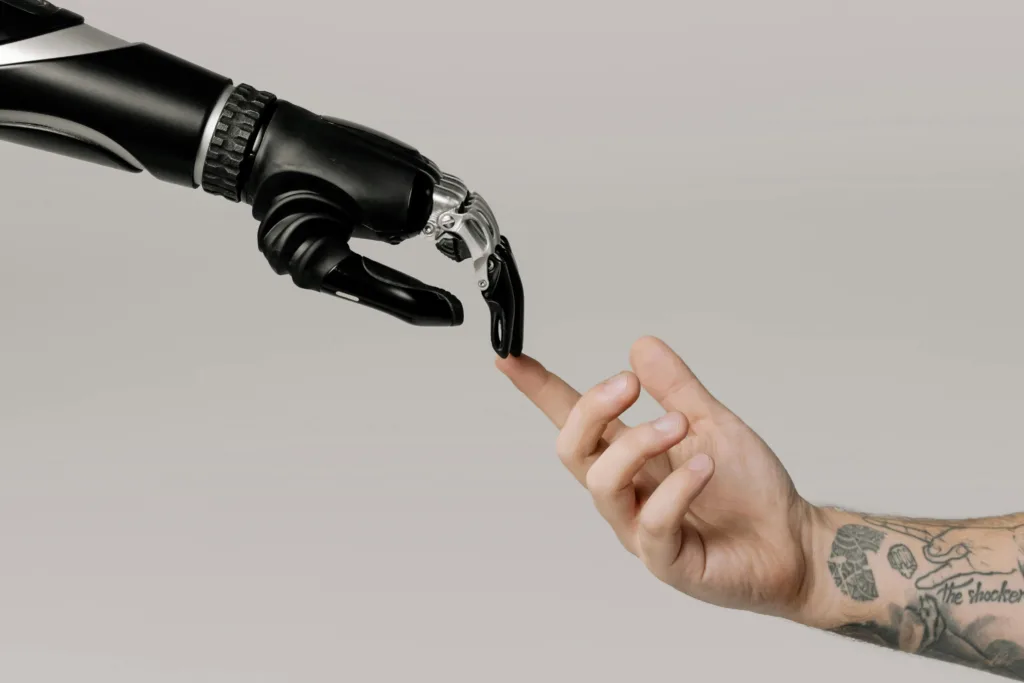
The vision of a personal robot helper has existed in the popular consciousness for more than a hundred years. The steel creatures of old sci-fi to the kindly humanoids of contemporary cartoons, the vision is the same: a useful, thinking machine that navigates our houses, does chores, and even provides companionship.
For decades, this idea was firmly in the realm of science fiction. Today, though, with rapid advances in artificial intelligence, robotics engineering, and ambient computing, personal assistant robots are approaching everyday life. Not just devices that vacuum the floor or play your favorite song on demand—but mobile, cognitive systems that sense, act, and respond with real context.
So, are we there yet? Let us look at how far we have come, where we stand now, and what is still in the way.
Part I: The Definition Shift — From Tools to Partners
When we talk about “home AI robotics,” we are no longer referring to a vacuum cleaner on wheels. Today’s conversation centers around systems that combine the following:
- Autonomy: the ability to navigate a space without constant input
- Contextual Intelligence: understanding your schedule, needs, and mood
- Mobility: moving through the environment with purpose
- Multi-functionality: performing a range of tasks, not just one
- Human Interaction: engaging in two-way communication, either via speech, gesture, or screen
This marks a significant evolution. A robot that can clean is useful. A robot that cleans, reminds you about appointments, alerts you to a stove left on, and helps entertain your child—now that is a personal assistant.
Part II: What Makes a True Personal Assistant Bot?
A genuine personal assistant robot for the home should meet several functional benchmarks. These aren’t theoretical—they’re technological milestones we are actively approaching:
1. Seamless Navigation
The bot must understand and adapt to the layout of a home. This involves simultaneous localization and mapping (SLAM), object recognition, and dynamic obstacle avoidance. It must move safely among pets, toddlers, clutter, and uneven flooring.
2. Task Diversity
Vacuuming is one thing, but folding laundry, carrying light objects, or prepping a basic snack are entirely different challenges. A home assistant robot needs both dexterity and decision-making capacity to manage varied, unscripted tasks.
3. Voice and Contextual Understanding
Natural language processing must go beyond command-and-response. The bot should infer meaning from context, respond differently based on tone, and manage multi-turn conversations. It should understand “Can you grab that?” even when “that” depends on what’s nearby.
4. Emotional Intelligence
This might sound futuristic, but it’s a frontier already being explored. Emotional awareness doesn’t mean the robot feels, but that it recognizes. Is the user angry, tired, stressed? Is a child being ignored? Emotionally attuned responses—offering music, dimming lights, or suggesting a break—make AI feel supportive rather than scripted.
5. Privacy-First Design
As more home robots include cameras and microphones, privacy is a serious concern. A successful assistant bot must process data locally whenever possible, give users granular control over what is stored or shared, and offer transparency about its sensors and decisions.
Part III: Why Now? The Technology Convergence
The emergence of viable personal assistant bots is not due to one major innovation, but rather the convergence of several maturing technologies:
A. Affordable Edge Computing
Modern AI models are increasingly capable of running on smaller, lower-power processors embedded in devices themselves. This reduces dependence on the cloud and cuts latency while improving privacy.
B. Breakthroughs in AI Reasoning
Large language models, like those developed by OpenAI and others, have dramatically improved machines’ ability to understand natural human speech and context. Combined with voice recognition and sentiment analysis, these systems enable more “human” interactions.
C. Better Batteries and Actuators
Battery density has improved, allowing robots to run for hours without recharge. Meanwhile, actuators (mechanisms that control motion) have become more precise, enabling smoother movement and manipulation of objects in cluttered environments.
D. Advances in Computer Vision
Using depth sensors, infrared cameras, and visual pattern recognition, robots can now build 3D models of their environments and track objects, pets, or people in real time.
Part IV: Who Are These Robots For?
Contrary to assumptions, the ideal audience for home assistant bots isn’t only early tech adopters. It’s much broader:
Seniors Aging in Place
Robots can remind about medication, detect falls, call for help, and reduce loneliness. For many, they are a safer and more affordable option than moving into assisted care.
Parents and Caregivers
Assistant bots can monitor children, provide entertainment, help with routine tasks, and alert parents to hazards or disruptions.
People with Limited Mobility
Robots capable of fetching, tidying, or controlling appliances can significantly enhance independence for individuals with disabilities or post-surgical limitations.
Busy Professionals
For those managing remote work, families, and daily logistics, even small reductions in daily friction—like checking calendars, setting routines, or managing lights and temperature—can compound into meaningful time savings.
Part V: Challenges and Limitations
Despite optimism, there are important reasons we haven’t yet seen mainstream adoption of multi-purpose home robots. These include:
1. Cost
As of 2025, most home robots with real capabilities cost between $3,000 and $15,000. That puts them in the same category as high-end home renovations or second cars—prohibitive for most.
2. Limited Dexterity
While we’ve seen robots that can run, jump, and even do backflips in lab environments, delicate tasks like folding clothes, preparing food, or picking up irregular objects remain difficult. Human-like hands are incredibly complex to replicate.
3. Cultural and Psychological Barriers
Many people are still uncomfortable with machines that move and “watch” autonomously. Trust takes time to build, and any mishap—a fall, a broken object, or misinterpreted command—can create lasting unease.
4. Fragmented Ecosystems
Most home robots are still siloed. One robot may clean, another may converse, and yet another may manage smart appliances. A fully integrated system—one bot to rule them all—is still rare.
Part VI: What a Day With a Home Assistant Robot Might Look Like
Let’s imagine a not-so-distant future where a mid-tier assistant bot is part of your household:
Morning
- The robot gently wakes you up at your preferred time.
- It opens the blinds and plays your curated news briefing.
- It informs you of weather, traffic, and any calendar changes.
- It brews coffee or turns on the kettle.
Midday
- While you work, it entertains your child with educational games.
- It reminds you of back-to-back meetings and offers a 5-minute meditation.
- It detects an overcooked pot on the stove and powers off the burner via a smart plug.
Evening
- It helps tidy up toys, loads the dishwasher, and starts the laundry.
- It dims lights, plays soft music, and activates security systems.
- It checks your fridge and reminds you to buy milk.
The key here is contextual autonomy—the ability to anticipate your needs without being asked every time.
Part VII: What Comes Next?
Looking forward over the next five years, here are a few predictions:
1. Lower-Cost Models
As economies of scale kick in and components become cheaper, we can expect entry-level assistant bots priced under $1,000. These may not have full manipulation capabilities but will offer mobile assistance and conversational support.
2. Modular Robotics
Rather than a single humanoid, homes may use multiple smaller robots specialized for certain tasks—one for fetching, one for cleaning, one for wellness monitoring—all coordinated through a shared AI system.
3. Greater Integration with Smart Homes
Assistant robots will act as mobile interfaces to your entire home, offering personalized interactions as they move from room to room—essentially replacing phones and static speakers as the core control point.
4. Customization and Personality
Just as voice assistants now offer different personalities, future home robots may be customizable in tone, appearance, and behavior. A child may want a friendly, animated helper; an adult may prefer a quiet, minimalist interface.
Part VIII: Ethical and Social Considerations
As we invite machines deeper into our private spaces, we must also consider the social contract we form with them.
Data Ownership
Who owns the data a robot collects about your habits, speech, and environment? And how can users ensure it isn’t sold or misused?
Human Replacement vs. Human Support
The goal must not be to replace human caregivers or social interaction, but to support and supplement them. Robots can fill gaps—especially where human presence isn’t feasible—but they should not substitute authentic connection.
Design Biases
AI systems learn from data, and data can reflect societal bias. Developers must ensure that these systems behave equitably across race, gender, accent, and ability.
Conclusion: Are We Finally There?
We are, at last, on the threshold of home AI robotics becoming a standard part of domestic life. Not as novelties or sci-fi curiosities—but as real, usable, helpful assistants.
No, they are not yet folding our laundry while chatting about philosophy. But they are moving, seeing, speaking, and learning. They are assisting, reminding, organizing, and monitoring. They are, in short, doing what early smartphones did—creating a foundation for the next stage in digital life.
The personal assistant bots of today are not perfect. But they are real, useful, and—most importantly—improving fast.





